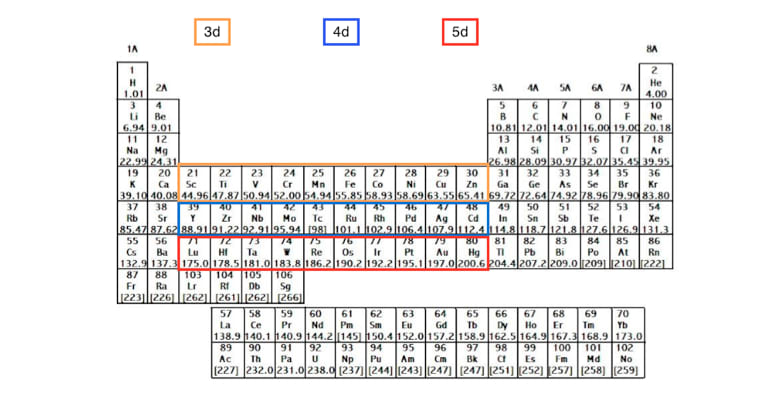

Since the number of electrons and their arrangement are responsible for the chemical behavior of atoms, the atomic number identifies the various chemical elements. Each electron is influenced by the electric fields produced by the positive nuclear charge and the other (Z – 1) negative electrons in the atom. Therefore, the number of electrons in neutral atom of Potassium is 19. The number of electrons in an electrically-neutral atom is the same as the number of protons in the nucleus. Potassium-41 is composed of 19 protons, 22 neutrons, and 19 electrons.

Potassium-39 is composed of 19 protons, 20 neutrons, and 19 electrons.

There are 25 known isotopes of potassium, three of which occur naturally: 39K (93.3%), 40K (0.0117%), and 41K (6.7%). Mass numbers of typical isotopes of Potassium are 39 41. Isotopes are nuclides that have the same atomic number and are therefore the same element, but differ in the number of neutrons. The difference between the neutron number and the atomic number is known as the neutron excess: D = N – Z = A – 2Z.įor stable elements, there is usually a variety of stable isotopes.

Neutron number plus atomic number equals atomic mass number: N+Z=A. The total number of neutrons in the nucleus of an atom is called the neutron number of the atom and is given the symbol N. The total electrical charge of the nucleus is therefore +Ze, where e (elementary charge) equals to 1,602 x 10 -19 coulombs. Total number of protons in the nucleus is called the atomic number of the atom and is given the symbol Z. For definitions of ionic radius and further information, follow the hypertext link.Potassium is a chemical element with atomic number 19 which means there are 19 protons in its nucleus. Further information is available in inorganic chemistry textbooks, usually at Level 1 or First Year University level. The terms low spin and high spin refer to the electronic configurations of particular geomtries of certain d-block metal ions. For electronic configurations, where it matters, the values given for octahedral species are low spin unless stated to be high spin. Size does depend upon geometry and environment. In this table, geometry refers to the arrangment of the ion's nearest neighbours. Hartree-Fock wave functions and radial expectation values: hydrogen to lawrencium, LA-3691, Los Alamos Scientific Laboratory, USA, 1968. The R max values for neutral gaseous element valence orbitals are abstracted from reference 1. Image showing periodicity of valence s-orbital radius for the chemical elements as size-coded balls on a periodic table grid. Table: valence shell orbital radii for potassium. Two values are given here, one is based upon calculations and the other upon observation - follow the appropriate link for further details. The problem is its meaning, which is clearly very different in different sources and books. The term "atomic radius" is not particularly helpful although its use is widespread. Follow the appropriate hyperlinks for definitions of each radius type. The size of neutral atoms depends upon the way in which the measurement is made and the environment. All values of radii are given in picometres (pm). Follow the appropriate hyperlinks for literature references and definitions of each type of radius. There are several other ways ways to define radius for atoms and ions. It is not always easy to make sensible comparisons between the elements however as some bonds are quite short because of multiple bonding (for instance the O=O distance in O 2 is short because of the the double bond connecting the two atoms. One measure of size is the element-element distance within the element.


 0 kommentar(er)
0 kommentar(er)
